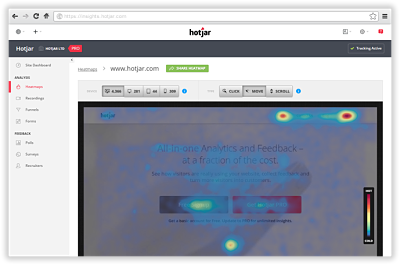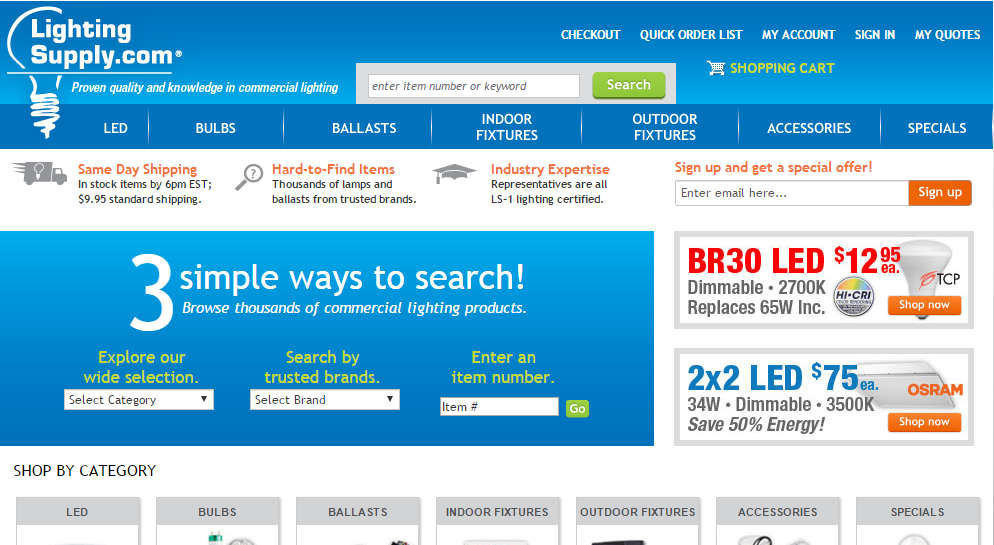|
You have to love this online generation where you can use so many things for free because they're digital. No exception in the world of digital marketing where some of the best tools are free, or at least have free options. Hotjar is one of those tools. (And their free account is so generous, it will be adequate for most small businesses. So if you have a website, sign up for free! My links are referral links but they don't pay me anything. I might get a t-shirt or something. ;) Coming out of beta on April 1, 2015, Hotjar has pretty much exploded onto the scene of website UX analysis and feedback because of the quality and depth of what it offers. For short, I'll refer to this sort of system as "UX analytics," and if that sounds technical and snooze worthy, it just means "understanding user experience." How are people using your website? Where are they getting stuck? What are they looking for? Are they getting confused by part of a form you've asked them to fill out? Etc. If you only get three people a month to your site, this kind of feedback won't have a lot of meaning and you'd better focus on building traffic. But once you have traffic, it's important to know what's working for real-world users and what is not. And that's where UX analytics help out. Frankly, there are two basic levels of this sort of software. One takes a ton more data and is "enterprise expensive." And while that level may have its use, systems like Hotjar can still be used on websites of any traffic levels. In fact, Hotjar's proprietary algorithm provides extrapolated data to keep costs low despite high traffic levels. This is one of the ways they set themselves apart, and also why they can offer so much for free. In fact, at this price level, the only real competition I see to Hotjar is Lucky Orange, which doesn't offer a free account. (So if you like free, you know where to go.) Honestly, the two services offer almost the same service suite with two big differences:
So while Lucky Orange is popular and offers a nice UX of its own, Hotjar will actually offer the better value for many businesses. Let's take a look. Hotjar Heat Maps Heat maps gather information from many visitors to a single web page and show you the hot and cold areas of that page. They can show you how far people are typically scrolling down on the page (do you need to get some critical points higher up so people will see them?). They can show you where people tend to hover their cursors, which gives you an idea of the content they're focusing on. And it can show you where people are clicking the most. Now the fact is, many websites already have Google Analytics installed and, with a Chrome extension called "Page Analytics," to somewhat see what people are clicking on in your websites. (The site needs GA installed and you need to be logged in.) I say you can somewhat see where they're clicking because it will show you clickable elements that have been clicked, but it won't show you (for example) if people are clicking elsewhere on the page, which might indicate that they're confused and think something's clickable when it isn't. The latter type of insight is something you can get from a true heat map like the one from Hotjar. And Google's tool doesn't give you the extras of cursor hovers and scrolling depth, which tells you a whole lot more about how you may want to restructure your site. In my work with Lighting Supply, we used a heat map to test an element on the web page that a former marketing vendor had recommended. In the image below, you can see the "3 simple ways to search!" box -- we wanted to know if people were using it, since we were considering design alternatives. As it turned out, almost all of visitors used the search bar at the top or the navigation bar near the top. Almost no one touched the tested element. So we removed that and the ads next to it in favor of a rotating banner that could showcase the company's most important deals. While a lot of marketers make decisions from guesses and assumptions, professionals test those assumptions. That's where heat maps (and the other tools discussed here) come into play. They help you see what you need to keep and what you need to change in order to boost conversions.
|
Archives
May 2018
|







 RSS Feed
RSS Feed
